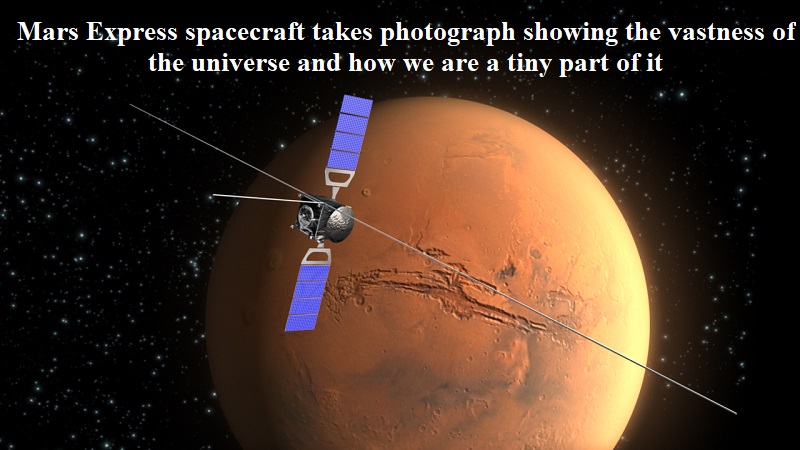
After three decades, scientists have captured an image reminiscent of the iconic “pale blue dot” photograph taken by the Voyager 1 spacecraft, which Carl Sagan described as our home – planet Earth. The Mars Express spacecraft, which recently marked its 20th anniversary in space, took a picture showcasing the vastness of the universe and our minuscule place within it.
The European Space Agency’s (ESA) Mars Express craft captured an image that evokes a sense of nostalgia, depicting Earth and its moon as tiny white objects. The super-resolution channel (SRC) of Mars Express’s High-Resolution Stereo Camera (HRSC) photographed Earth and the moon on several occasions between May 15th and June 2nd, 2023, covering more than half of the moon’s monthly orbit around Earth.
This latest picture commemorates the 20th anniversary of the orbiter’s first Earth-Mars photo. While the 2003 image was taken when the orbiter was merely 8 million kilometers away from home, the recent photo was captured from a distance of 300,000 kilometers.
Although the images hold no scientific value, Daniela Tirsch, a member of the Mars Express HRSC team, explained that the favorable conditions allowed them to capture the photographs, creating a symbolic portrayal of Earth on this remarkable milestone for the Mars Express mission.
According to the scientists, Earth appears in the image as small as an ant seen from a distance of 100 meters.
Jorge Hernández Bernal, another member of the Mars Express team involved in initiating the image, expressed the humbling experience of seeing such images and emphasized the importance of preserving the “pale blue dot” since there is no planet B.
The Mars Express has been exploring space for two full decades and has received multiple mission extensions, with the latest extension keeping it operational until December 31, 2026. While the ESA has already utilized an orbiter to investigate Mars and plans to send the Rosalind Franklin rover in the next decade, the ultimate goal is to have humans land on the surface of the Red Planet.
Colin Wilson, the ESA project scientist for Mars Express and the ExoMars Trace Gas Orbiter, expressed the ambitious aspiration of exploring Mars with humans in the future, speculating that in another 20 years, astronauts on Mars might gaze at the night sky and see Earth shining brightly above them.

Post Your Comments